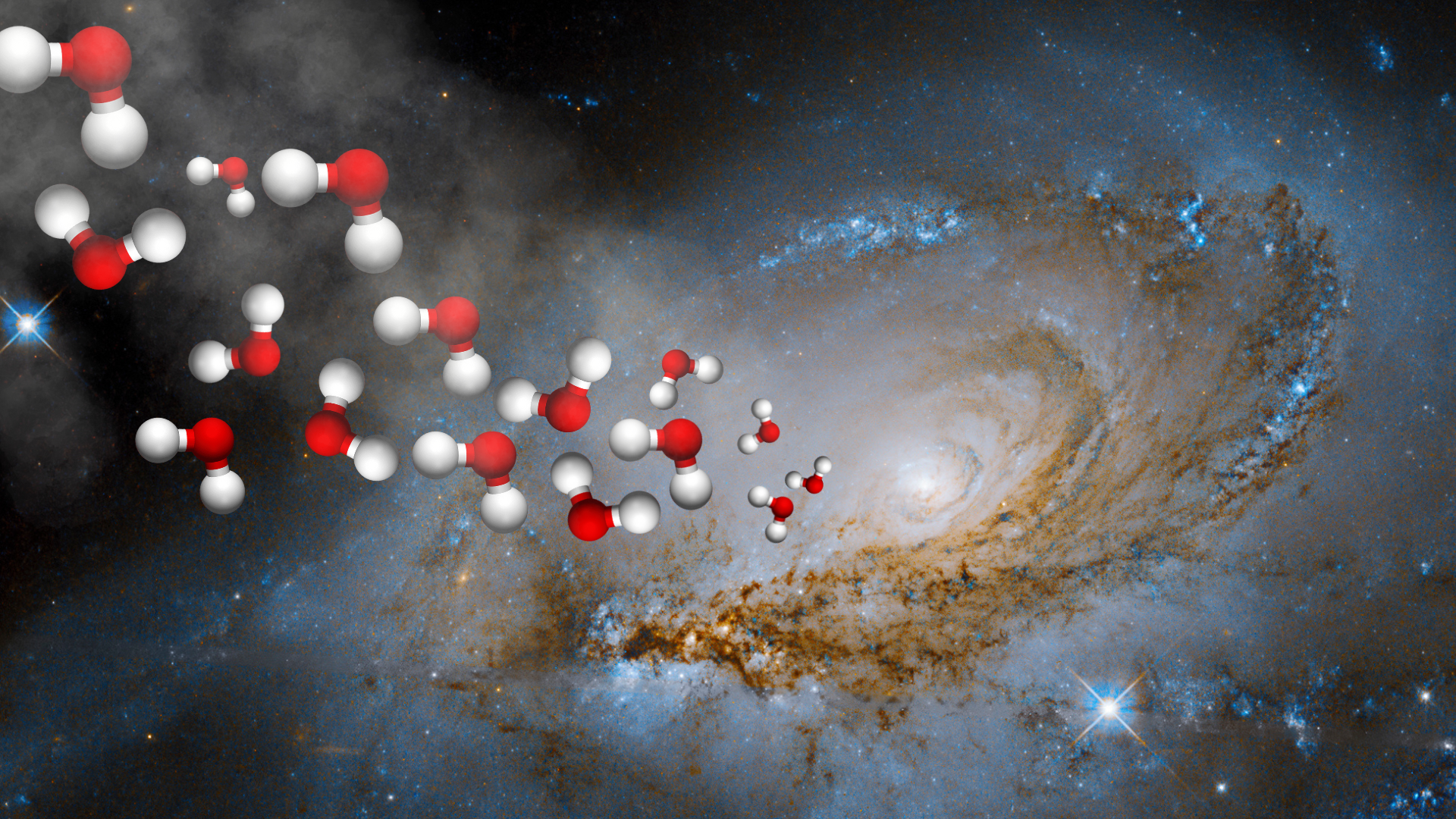
For the first time, scientists managed to develop a map of water distribution in a galaxy that existed when the 13.8-billion-year-old universe was just a cosmic teenager.
The galaxy, designated J1135, is located around 12 billion light-years from Earth and is therefore seen as it was less than 2 billion years after the Big Bang.
J1135's water map, created as part of a Scuola Internazionale Superiore di Studi Avanzati (SISSA) study conducted by the Galaxy Observational and Theoretical Astrophysics (GOThA) team, also has an unprecedented resolution that could reveal never-before-seen dynamics of early universe galaxies.
Though water is an essential ingredient for life, its presence across the universe has a purpose beyond searching for habitable regions. Scientists can use the distribution of water across a galaxy to tell the cosmic story of certain processes occurring within. This is because, as water changes its state from ice to vapor, it indicates areas of increased energy where stars, or even black holes, are being born. In short, that means finding water vapor in a particular region of a galaxy indicates that something very important is happening there.
"Water can be found not only on Earth but anywhere in space, in different states," Francesca Perrotta, lead author of the study and a SISSA researcher, said in a statement. "For example, in the form of ice, water can be found in so-called molecular clouds, dense regions of dust and gas in which stars are born."
"Water acts like a cloak," Perrotta continued, "covering the surface of interstellar dust grains, which form the building blocks of these molecular clouds and the principal catalysts of molecule formation in space.”
Related: James Webb Space Telescope finds water in super-hot exoplanet's atmosphere
Perrotta also explained that there are times with something breaks the stillness and coldness of these molecular clouds, such as a star birth that releases heat or a black hole beginning to feast on surrounding matter that, in turn, emits energy.
Radiation from these disruptive sources heats frozen water, causing it to convert straight to a gaseous form, aka water vapor, during a process called sublimation. Then, as this water vapor cools, it emits infrared light that astronomers are able to observe.
"Astrophysicists can then observe this water vapor emission to map the regions of the galaxy where energy is produced, giving us unprecedented insights into how galaxies are formed," Perrotta said.
That emission data can also be combined with the mapping of certain molecules, such as carbon dioxide, to reveal even more about how galaxies come together over time.
But observing early galaxies, such as J1135, wouldn’t be possible without a little help from a phenomenon first predicted in Albert Einstein’s theory of general relativity called "gravitational lensing."
A deep dive into early galaxies, courtesy of Einstein
Einstein's 1915 theory of general relativity basically predicts that objects with mass have a warping effect on the very fabric of space and time, assuming time as tangible in higher dimensions. This is akin to the 2D analogy of spherical weights placed on a stretched rubber sheet causing dents in the fabric. Just as weights with greater mass cause more extreme curving of the sheet, cosmic objects of greater mass cause more extreme warping of spacetime. Except, in reality, the warping of spacetime happens in 4D because of the time bit.
Not only does that curvature give rise to what we know as gravity, but also to a really interesting phenomena to do with light.
When light from a background source — say, an ancient star — passes by spacetime curvature created by a massive galaxy between that background source and Earth, the curve of the light's path past the intervening object depends on how close it comes to the warp. This ultimately means the light from the same object can arrive at our telescopes at different times.
As a result of this, not only can the same background object appear at multiple points in a single image, but can also be magnified by the effect, hence the description of these intervening objects as “gravitational lenses.”
The phenomenon has been used to great effect by the James Webb Space Telescope (JWST), as the instrument has observed the earliest galaxies ever seen by humanity. And, importantly for the new study, it was also integral in the discovery of J1135.
By playing a role in helping scientists determine the water distribution of J1135, gravitational lensing has also become integral in understanding how that galaxy evolved during the teenage years of the universe. A better picture of this transition will hopefully be revealed by the team as they continue to investigate this galaxy.
“It isn’t yet clear how galaxies are formed. There are at least two possible scenarios, not necessarily alternative: one sees the aggregation of small galaxies to create larger ones, and the other sees the formation of stars in situ,” Perrotta said. “Studies like ours help us to understand what is happening, specifically in that galaxy, but we can also potentially deduce more generic information from that.”
The team's research was published July 19 in The Astrophysical Journal.







